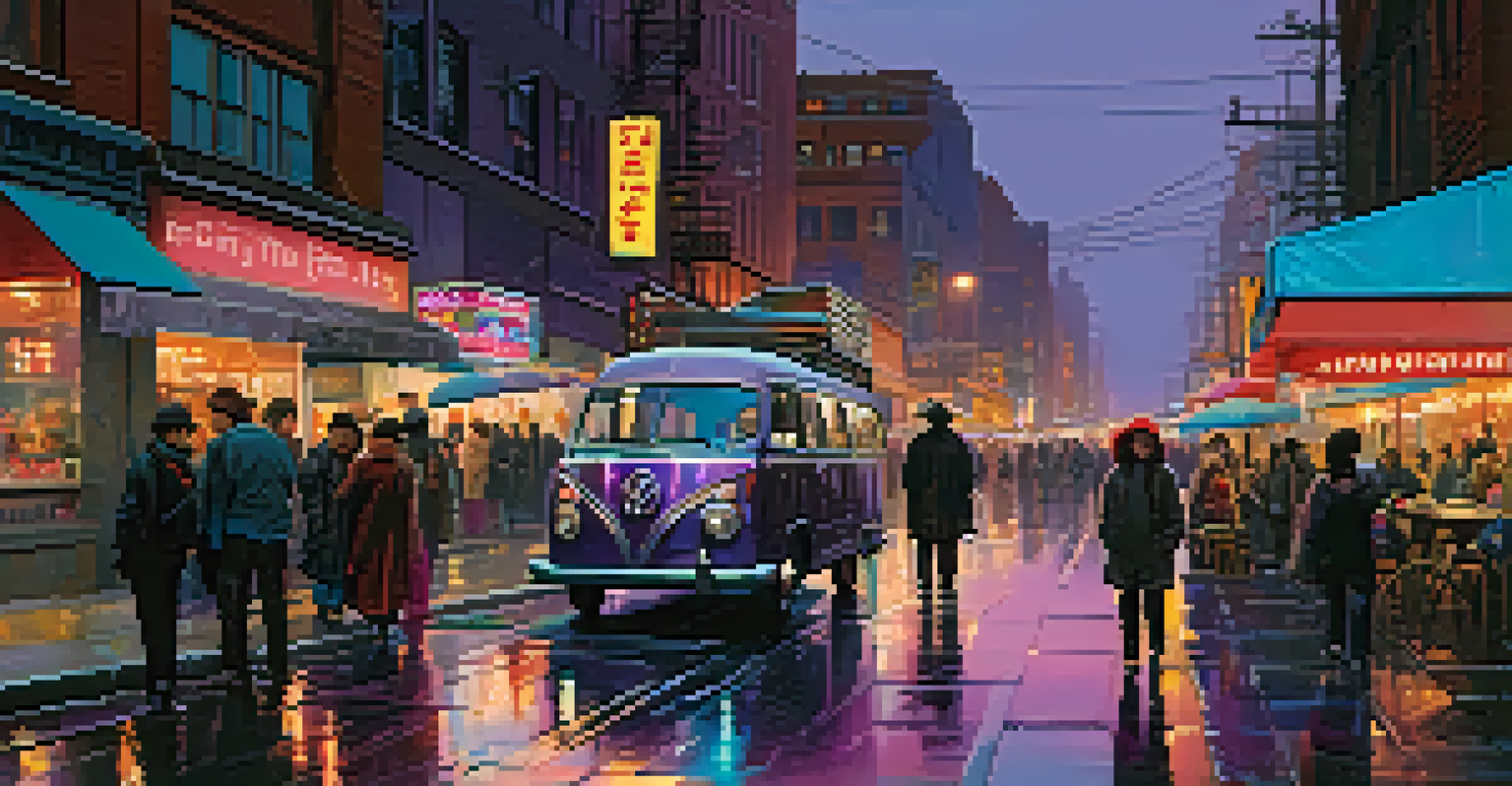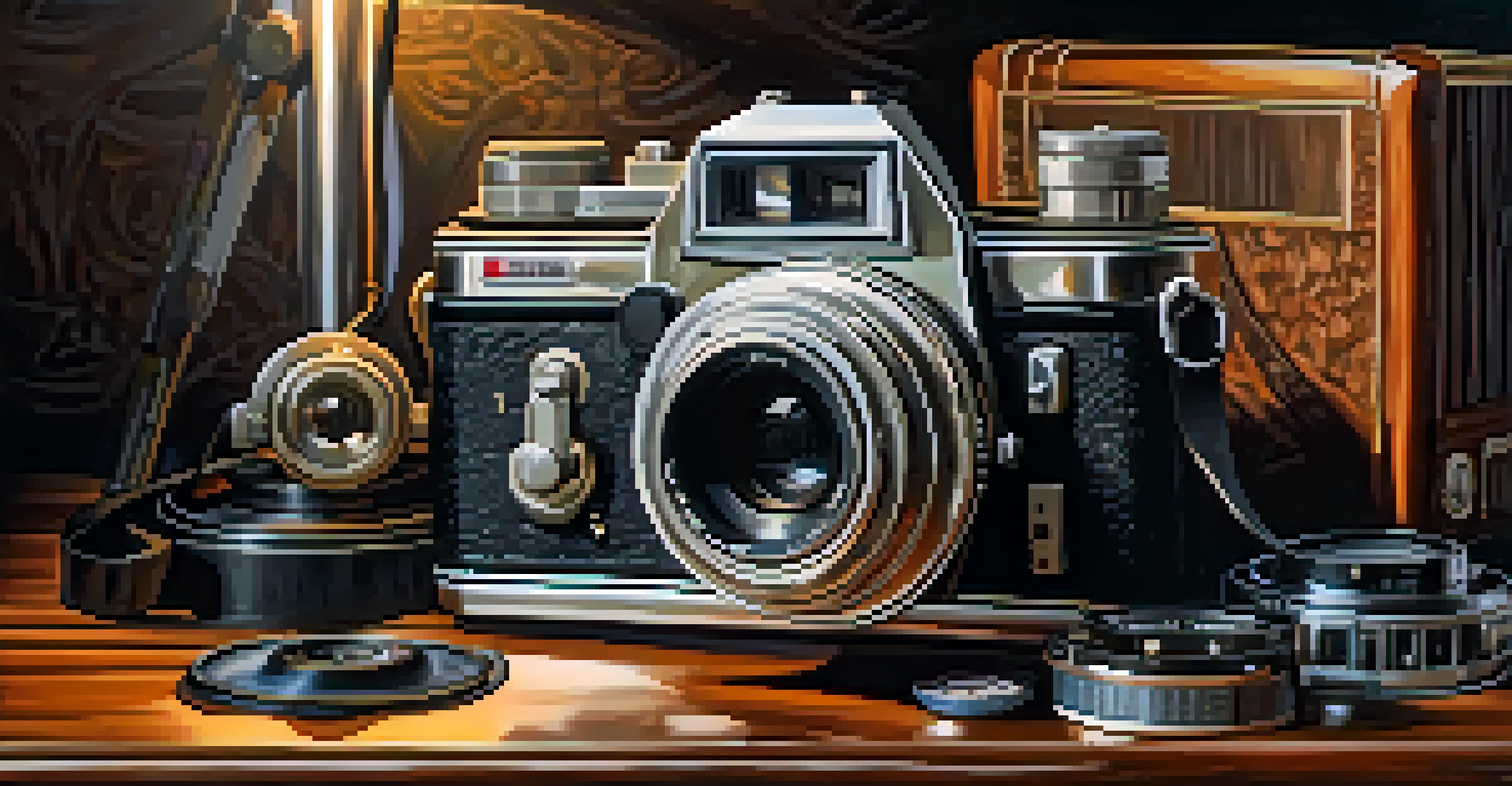The Role of Sound Design in the Film Editing Process

Understanding Sound Design in Film
Sound design is the art of creating soundtracks for films, focusing on the auditory experience. It encompasses everything from dialogue to sound effects and music, shaping how audiences perceive a story. Think of it as the unsung hero of filmmaking, often working behind the scenes to enhance emotional impact and storytelling.
Sound is the soundtrack of our lives and the heartbeat of cinema.
For instance, consider the sound of a creaking door in a horror film. It not only sets the mood but also builds tension, drawing viewers into the narrative. This auditory layer adds depth, making moments more immersive and engaging.
In essence, sound design is not merely an add-on; it’s a fundamental component that complements visual storytelling. Without it, films would lack the emotional resonance that keeps audiences on the edge of their seats.
The Integration of Sound and Visuals
Sound design works hand-in-hand with visual elements to create a cohesive film experience. This synergy is crucial; when sound complements visuals, it enhances the overall impact of a scene. Imagine watching a thrilling chase scene without the revving engines or the sound of footsteps—much of the excitement would diminish.

An example of this integration can be found in action films, where sound effects amplify the intensity of visual action. The whoosh of a sword or the explosion of a bomb can elevate the stakes, making viewers feel as if they are part of the chaos.
Sound Design Enhances Storytelling
Sound design is a fundamental element that elevates emotional impact and immerses audiences in a film's narrative.
Ultimately, effective sound design enhances the storytelling by ensuring that auditory elements align perfectly with what viewers see. This harmony keeps audiences engaged and makes the cinematic experience more memorable.
Creating Atmosphere with Sound
Sound design plays a pivotal role in establishing the film's atmosphere. Whether it’s the bustling sounds of a city or the serene chirping of birds in a countryside scene, these auditory elements create a vivid backdrop. This atmospheric layering helps transport viewers into the film's world, making it feel more authentic.
Without sound, a film is just a series of moving images.
For example, in a romantic film, soft background music can evoke feelings of warmth and love, while sharp, discordant sounds can signal tension or conflict. These soundscapes set the emotional tone and guide viewers' reactions throughout the film.
By crafting an immersive atmosphere, sound design enriches the viewing experience. It allows audiences to not just watch, but to feel and connect with the story on a deeper level.
Enhancing Character Development Through Sound
Sound design also contributes significantly to character development. Specific sounds can become associated with a character, helping to reinforce their personality or emotional state. For instance, the haunting melody that plays when a tragic character appears can evoke sympathy and deepen the audience's understanding of their struggles.
Consider iconic characters like Darth Vader from Star Wars, whose heavy breathing has become synonymous with his menacing presence. Such auditory cues not only define a character but also create memorable associations that linger long after the film ends.
Integration of Sound and Visuals
A harmonious relationship between sound and visuals creates a cohesive film experience, enhancing viewer engagement.
In this way, sound design serves as a powerful tool for filmmakers, allowing them to shape how viewers perceive and relate to characters. It adds layers of meaning that visuals alone may not convey.
The Importance of Dialogue in Sound Design
Dialogue is a critical aspect of sound design, as it conveys essential information and emotion. The clarity and delivery of dialogue can significantly affect how a scene is received. Poorly mixed dialogue can lead to confusion, diminishing the film's impact and leaving audiences disengaged.
For instance, a dramatic monologue can lose its power if the audience struggles to hear the lines. Sound designers work meticulously to ensure that every word is crisp and clear, often using techniques like ADR (Automated Dialogue Replacement) to enhance audio quality.
By prioritizing dialogue in sound design, filmmakers ensure that the story remains coherent and emotionally resonant. This attention to detail helps audiences connect with the narrative and its characters more fully.
The Role of Foley in Film Sound Design
Foley is a fascinating aspect of sound design that involves creating everyday sound effects in post-production. These sounds—like footsteps, rustling clothes, or the clinking of glasses—add realism to scenes and help immerse viewers in the film's world. Without Foley, many films would feel flat or incomplete.
For example, imagine a scene where a character walks through a forest. The sound of leaves crunching underfoot adds to the authenticity of the experience, enhancing the viewer's connection to the setting. Foley artists painstakingly recreate these sounds to ensure they blend seamlessly with dialogue and music.
Foley Adds Realism to Films
Foley artists create everyday sound effects that enrich the authenticity of scenes, making the cinematic experience more immersive.
Incorporating Foley into sound design not only enhances realism but also enriches the emotional fabric of a film. It’s a behind-the-scenes magic that brings stories to life in unexpected ways.
The Future of Sound Design in Film Editing
As technology evolves, so too does the field of sound design. Innovations like spatial audio and virtual reality are expanding the possibilities for filmmakers, allowing for more immersive experiences. These advancements will undoubtedly change how sound is integrated into the film editing process.
For instance, spatial audio can create a 360-degree sound environment, allowing viewers to experience sound from all directions. This technology can enhance storytelling by providing a more immersive experience, making audiences feel as if they are truly part of the action.

Looking ahead, the future of sound design promises exciting developments that will continue to shape the film industry. By embracing these advancements, filmmakers can create even more compelling narratives that resonate with audiences on multiple sensory levels.